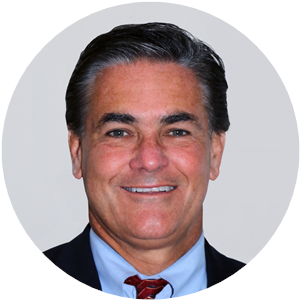More than any demographic, the elderly have suffered the most during the COVID-19 pandemic. In all, more than 50% of the deaths attributed to the virus have occurred in people over the age of 60, and many of them were once living in senior housing and nursing facilities. Residents of nursing homes are generally people who can no longer care for themselves or have some degree of maladies which make it difficult to live alone. Whether due to age or an underlying condition, their health is in some way compromised, making this population highly susceptible to diseases, whether bacterial or viral. Any time you have an immunodeficient resident or patient, precautions must be taken to provide the cleanest and safest possible environment.
Preventing the tragedy of COVID-19 from happening again, or even reducing the danger, is the topic being heavily studied by operators and builders of medical facilities and infectious disease consultants, in the hope of coming up with solutions to mitigate the potential return of the disease (and variants of the same) in the future. Hospitals have ICUs and clean rooms, but the cost of such facilities is not economically feasible for everyday care of the marginally ill—like residents of senior communities. And despite our absolute best intentions, a number of reasons will make overcoming this challenge a very difficult process.
The Future of Improvements
To make nursing homes safer in the future, several specific steps will need to be taken. First, maintenance procedures and cleaning processes will have to be upgraded to include the full cleaning of hallways, public areas, and resident rooms several times a day versus a few times a week. Due to this, cleaning stations will need to be inserted in every wing of the buildings, possibly one station for every eight or 10 rooms. Today, it is more likely that there are only one or two cleaning stations for a whole facility, possibly up to 120 rooms.
Individual rooms will also need to be sterilized with specialized equipment on a regular basis. Deionization sprayers equipped with blue lights will become the norm. Handheld and backpack units like those from EvaClean sanitize the rooms the same as those used in hospitals for Hospital Acquired Infections (HAIs). Medicare reimbursements to hospitals are hinged on the lack of HAIs, and we can expect that same model for nursing homes and viruses in the future.
Cleaning the facility’s air will also be a top priority, as COVID-19 has shown to be spread significantly by breathing infected air over a period of time. HVAC systems will need to be upgraded to include air purifiers that provide thicker, stronger, and denser filtration systems (HEPA filtering class 10 or better). But the optimal solution will likely include a combination of the improved HEPA filtering with an ultraviolet light purification system. These systems run fresh outdoor and recirculated air over an ultraviolet light box which decontaminates the particulate and provides the cleanest possible air for the entire building.
Another modification will be employee screening. As a standard procedure, employees will need to be temperature checked before entering the facility for each shift. Additionally, when the science provides the option, employees and guests will need a rapid virus swab and test.
Unfortunately, despite the best intentions, state regulations could get in the way of some of the above upgrades. Many states have put moratoriums on new nursing home licenses and no new facilities can be built without first tearing down an existing licensed facility, or by buying the licensed rooms from a closed operator. This makes it exceedingly difficult to build modern state-of-the-art facilities with the necessary safety measures installed. Only the best facilities have the capital to remodel and improve their properties, and these often require additional private pay to supplement their income models.
Financial Challenges Lay Ahead
The government supports senior facilities by helping to pay for services through Medicaid. Nursing homes are rated on a five-star system, earned through resident safety studies, cleanliness, and the ratio of Registered Nurses (RNs) to resident. Those with four or more stars become the most sought out locations for new residents while also receiving the greatest financial assistance from the federal government.
However, year after year, federal reimbursements to nursing facilities have not kept pace with inflation and true medical costs. This creates a challenge of receiving fewer reimbursements with the expectation to provide more and better services. It forces the homes into hiring LPNs versus RNs where possible, in order to meet the patient care and still allow the facility to function safely, profitably or not. Families and patients also demand larger and cleaner rooms and facilities, but the economics dictate the opposite. Thus, the star ratings decline or become ever harder to maintain.
All of the aforementioned modifications, and others including greater spacing of residents, will require additional capital, but under the current system, these funds are not readily available. And now that state and federal governments have spent large sums to stabilize the economy, it is doubly hard to see how the necessary additional funds can come from a public source. This will put even greater stress on families as private pay will be necessary, but not easily available, making the cost of four- and five-star communities even higher.
Ultimately, all congregating living arrangements will need to address new protocols for cleanliness and testing. But with such a vulnerable population, the senior care community has the biggest target, coupled with the weakest prospects, for funding. The solution for this will be a joint effort between private and public funding to increase the awareness and commitment to our seniors that need the help. And as the past few months have shown us, that solution could save lives.






